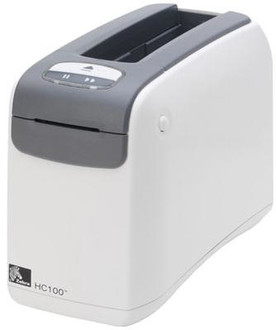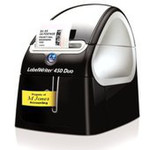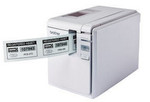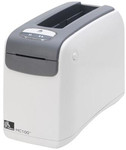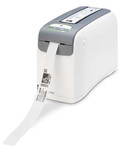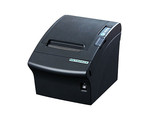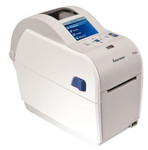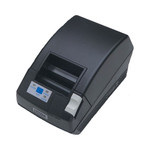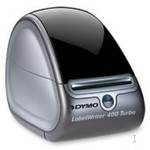目錄的
-
目錄的
- Antiquitäten & Kunst
- Auto & Motorrad: Fahrzeuge
- Baby
- Bücher
- Camping & Outdoor
- Feinschmecker
- Garten & Terrasse
- Haushalt & Wohnen
- Haustierbedarf
- Heimwerken & Garten
- IT和电子
- Kleidung & Accessoires
- Modellbau
- Musik
- PC- & Videospiele
- Sammeln & Seltenes
- Spielzeug
- TV, Video, DVD
- Telekommunikation
- Uhren & Schmuck
- Wellness & Beauty
- fashion & lifestyle
- institutional food services equipment
- medical equipment, accessories & supplies
- 个人护理
- 休闲爱好
- 办公设备,用品和配件
- 商业与工业
- 家居,建筑,装修
- 家用电器
- 摩托车及配件
- 武器和弹药
- 照相机
- 花园和庭院
- 运动,娱乐及休闲
- 食物
- 高保真音響
Filters
Search
Zebra HC100 Direct thermal 300 x 300DPI Black,White
凡购买和价格 (Advertising *)
顶部
技术特点
顶部
纸张处理
| 最大媒体的长度 | 558 mm |
|---|---|
| 最大标签长度 | 0.558 m |
| 最大标签宽度 | 30.16 mm |
| 支持的纸张宽度 | 30.16 mm |
性能
| 内置式条码 | CODABAR (NW-7), Code 128 (A/B/C), Code 39, Code 49, Code 93, EAN13, Industrial 2/5, Interleaved 2/5, MaxiCode, PDF417, POSTNET, QR Code, UPC-A, UPC-E |
|---|
打印速度
| 打印技术 | Direct thermal |
|---|---|
| 打印速度 | 102 mm/sec |
端口 & 界面
| 无线局域网连接 | Y |
|---|---|
| RS - 232接口 | Y |
| USB1.1端口的数量 | 1 |
能量控制
| 能源之星认证 | Y |
|---|
内存参数
| 闪存 | 8 MB |
|---|---|
| 内置存储器 | 16 MB |
环境条件
| 运行温度范围(T - T) | 40 - 104 °F |
|---|---|
| 储存温度范围 (T-T) | -40 - 140 °F |
另外
| 以太网连接器 | N |
|---|---|
| RS-232接口 | 1 |
HC100 - Direct thermal, ZPL, 300 dpi (12 dots/mm), 10.16 cm (4 ") (102 mm)/sec, 32-bit RISC, Serial, USB, WLAN 802.11b/g, 1.4kg, White/Black
- Print method: Direct thermal;
- Programming language: ZPL®;
- Construction: Dual-wall frame, impact resistant plastic.
<b>Nebraska Medical Center</b>
The Nebraska Medical Center implemented patient wristbands with 2-D bar codes, and two unique bar codes on each, while reducing the hassle of band creation for nurses.
<b>Great Ormond Street Hospital</b>
Great Ormond Street Hospital for Children NHS Trust has implemented their printed wristband solution to comply with the National Patient Safety Agency (NPSA) Positive Patient Identification directive in the UK. After exhaustive trials and evaluation, the hospital finally chose the Zebra® HC100™ wristband printer with its unique cartridge loading features along with 3rd party 2D bar-code images with special healthcare plastics.
<b>Prague General University Hospital</b>
Zebra wristband solution increases patient safety and medicine administration at Prague General University Hospital.
<b>Thibodaux Regional Medical Center</b>
A closer look at how Thibodaux Regional Medical Center, a 185-bed acute care facility in Thibodaux, La was able to better support bedside medication verification by replacing paper bar code labels with a more durable, easy-to-scan solution in the Zebra HC100™ Patient I.D. Solution.
<b>Valencia Hospital</b>
As science and technology progresses, one of the biggest challenges is to reduce hospital errors as much as possible. As soon as the patient is admitted to hospital, the various processes and the intervention at different levels by medical professionals (from paramedics, nurses and doctors, to administration and laboratory staff), all increase the risk of mistakes being made. For this reason, automatic patient identification (patient ID) has become significantly important in hospitals, where it succeeds in reducing errors virtually to zero.
<b>Kalispell Regional Medical Center</b>
Montana hospital improves workflows and patient safety with Zebra's wristband solution.
- Programming language: ZPL®;
- Construction: Dual-wall frame, impact resistant plastic.
<b>Nebraska Medical Center</b>
The Nebraska Medical Center implemented patient wristbands with 2-D bar codes, and two unique bar codes on each, while reducing the hassle of band creation for nurses.
<b>Great Ormond Street Hospital</b>
Great Ormond Street Hospital for Children NHS Trust has implemented their printed wristband solution to comply with the National Patient Safety Agency (NPSA) Positive Patient Identification directive in the UK. After exhaustive trials and evaluation, the hospital finally chose the Zebra® HC100™ wristband printer with its unique cartridge loading features along with 3rd party 2D bar-code images with special healthcare plastics.
<b>Prague General University Hospital</b>
Zebra wristband solution increases patient safety and medicine administration at Prague General University Hospital.
<b>Thibodaux Regional Medical Center</b>
A closer look at how Thibodaux Regional Medical Center, a 185-bed acute care facility in Thibodaux, La was able to better support bedside medication verification by replacing paper bar code labels with a more durable, easy-to-scan solution in the Zebra HC100™ Patient I.D. Solution.
<b>Valencia Hospital</b>
As science and technology progresses, one of the biggest challenges is to reduce hospital errors as much as possible. As soon as the patient is admitted to hospital, the various processes and the intervention at different levels by medical professionals (from paramedics, nurses and doctors, to administration and laboratory staff), all increase the risk of mistakes being made. For this reason, automatic patient identification (patient ID) has become significantly important in hospitals, where it succeeds in reducing errors virtually to zero.
<b>Kalispell Regional Medical Center</b>
Montana hospital improves workflows and patient safety with Zebra's wristband solution.
類似的優惠
顶部
-
支付方式
我们接受:


